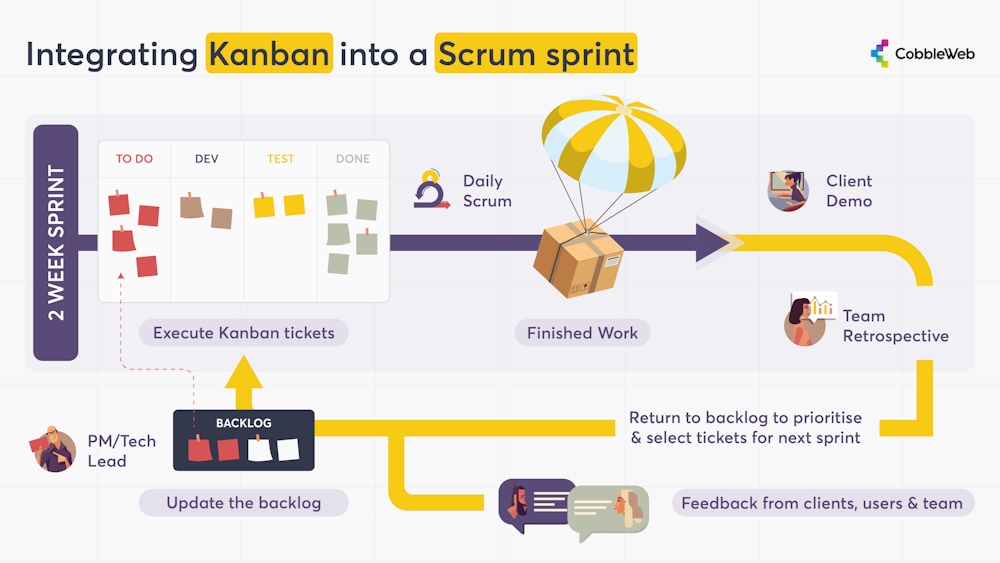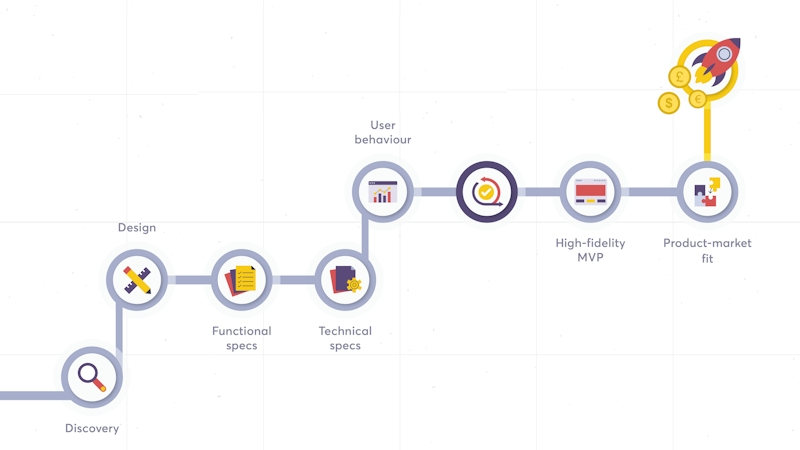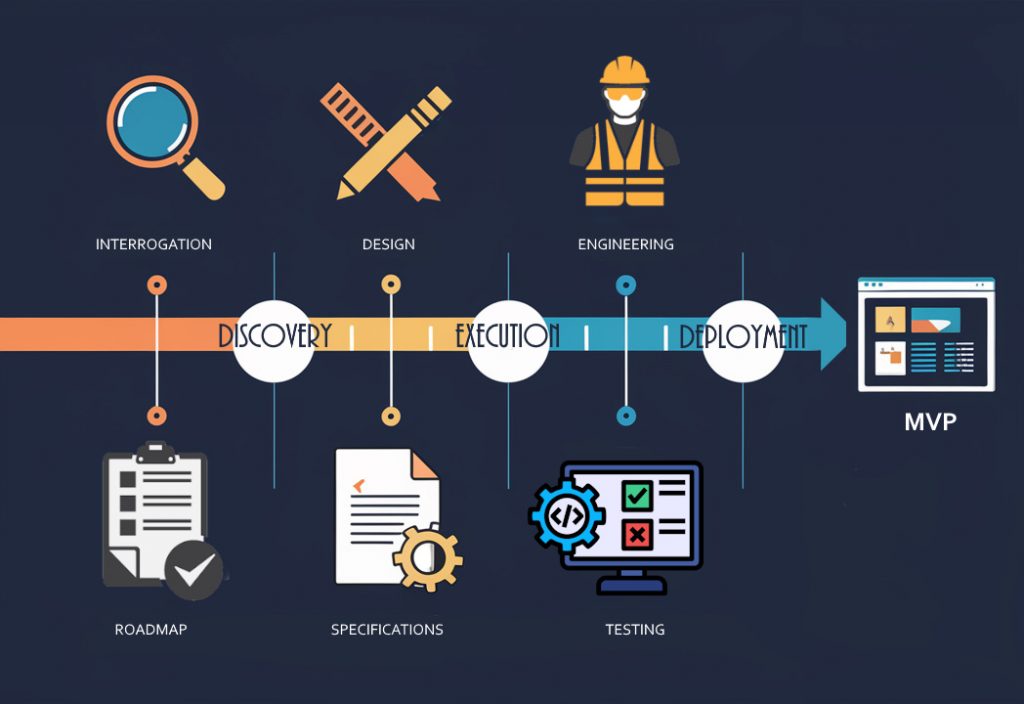The allure of an online marketplace – a bustling platform connecting buyers and sellers – is undeniable. But the journey from vision to a fully functional platform can be daunting. One of the most pressing questions for aspiring marketplace entrepreneurs is: how long does it take to build a fully functional marketplace?
The short answer (and a gross generalisation): three to nine months. But like everything else in the realm of the complex animal that is a marketplace, there are many variables to consider. The fact is, there’s no one-size-fits-all answer. The development timeline hinges on several crucial factors, each demanding careful consideration.
The Foundation: Existing Business or Startup Dream?
What stage your marketplace project is at will have a significant impact on the timeline. Is your marketplace an extension of an existing business, leveraging existing infrastructure and customer base? Or are you embarking on a brand-new venture?
An established company with a development team and established processes might enjoy a head start. They can leverage existing resources and potentially adapt internal systems to accommodate the marketplace. Here, the focus might be on integrating the marketplace platform seamlessly with existing operations. This could shave off valuable development time.
Greenfield startups, on the other hand, need to build everything from scratch. This includes defining the marketplace concept, identifying target users, and choosing a suitable tech stack. While this might seem like a disadvantage, it also offers greater flexibility. Startups can tailor the platform from the ground up to perfectly fit their vision.
Feature Frenzy vs. Strategic Selection
Imagine a marketplace overflowing with features, from social media integration to complex logistics management. While it might sound impressive, an excessively ambitious scope can be a development time bomb. Building a “kitchen sink” marketplace can stretch resources thin, leading to delays and potentially even scrapping the project altogether.
The key lies in strategic feature selection. A thorough discovery process is particularly useful. This involves in-depth research on the business model, the target users, and competitors to understand needs, identify pain points, and determine what functionalities will provide the most significant value. Prioritise features that directly address user needs and contribute to a smooth user experience.
The bottom line – feature selection should be the outcome of a detailed process, rather than just ticked off a list of want-to-haves.
The Development Tightrope: Kanban vs Scrum
A factor that is often under-estimated is the effect of the project management approach on project timelines and budgets. Traditional project management approaches, like the waterfall model, tend to limit both the speed and agility of the development process. As we mentioned in our detailed post on marketplace project management:
“A rigid production-line approach simply can’t accommodate the vastly differing variables, such as user flows and go-to-market strategies, of individual marketplace projects.”
To solve this inefficiency, agile methodologies like Kanban and Scrum were adapted for software development.
Scrum‘s highly-specific framework provides important structure that keeps complex projects like marketplaces on track. It includes team role definitions (who does what), fixed-time work batches (sprints), and clearly defined meetings such as daily standups and sprint reviews.
Epics – the collection of user stories that make up marketplace features – are the building blocks of Scrum and each Epic is usually executed over one or two sprints. This Scrum/Epic approach promotes close alignment between the development process and the client’s business goals.
But what if there is a sudden change in plan or an emergency? If Scrum was applied it could disrupt the whole project timeline due to interdependencies between Epics.
Fortunately, Kanban, an interface for managing standalone issues, can fill the gap. It utilises a visual approach (to do, in progress, done) to quickly prioritise standalone issues and execute them subject to capacity constraints. It’s a great way to avoid bottlenecks and build a healthy backlog of tasks.
So the million dollar question is, does your development partner offer focussed execution as well as agile prioritisation? The answer will have a huge impact on your project timeline . . . as well as your pocket.

Budgetary constraints: A Reality Check
Building a marketplace requires investment. Development costs can vary significantly depending on the chosen features, development approach (in-house, outsourced, or pre-built solutions), and the level of technical expertise needed.
It follows that a limited budget might necessitate a more modest initial feature set or a longer timeline. Consider launching a Minimum Viable Product (MVP) that includes core functionalities and focuses on user acquisition. As the user base grows and revenue is generated, additional features can be introduced.
Since we are talking about budgets, it is very important to understand the difference between the initial marketplace development cost and the budget required for multiple iterations that can lead to successful product-market fit. We explain this aspect in more detail here.
The takeaway here should be that trying to build everything at once with a limited budget is a recipe for disaster. Be realistic about what you can achieve with your resources and prioritise features that offer the highest return on investment.
The Perils of Speed: Cautionary Tales
Trying to rush through development is a common pitfall that can derail the entire project. Here are some cautionary tales to consider:
Eventerprise was an events services marketplace that ran out funds when it rushed to add too many bells and whistles to a fully-fledged first version of their platform. It subsequently gained very little traction, in large part because they skipped important aspects such as problem-solution fit. A low-fidelity MVP would have saved them a lot of money.
Quibi, a short-form video streaming platform, launched with a bang but quickly fizzled out. One of the contributing factors was an overly ambitious feature set that wasn’t fully tested, leading to a buggy and frustrating user experience.
The Importance of Focus, Ownership & Humility
Building a successful marketplace requires a commitment to data-driven decision making and adherence to a proven development process.
Marketplace entrepreneurs often underestimate the impact of their own indecision. Constantly changing the feature set mid-development can throw timelines into disarray and demoralise the development team.
Don’t outsource your learnings! Many founders are unwilling to take ownership of critical aspects of the development process. Such a hands-off approach will invariably let things slip through the cracks, since close collaboration between all parties is key to timely deliveries.
The opposite of the lackadaisical approach above would be hubris, when founders ignore expert advice. Many marketplace projects get bogged down in time-wasting arguments, because the founder may have done well in a different discipline, such as sales, but doesn’t necessarily understand the complexities of marketplace development.
Lastly, many entrepreneurs lack experience with project management or software development methodologies. This can be an obstacle to close collaboration with the development team.
The Takeaway: stick to the data; stick to the process
Creating a thriving online marketplace is an exciting journey, but one that requires patience and calculated steps. By basing decisions on relevant data, carefully selecting features, and adhering to a proven development process, you can take better control of the development timeline and significantly improve your chances of success.


